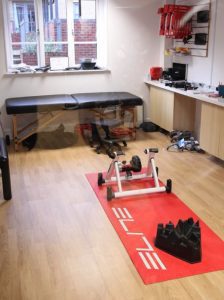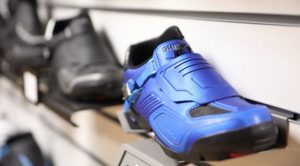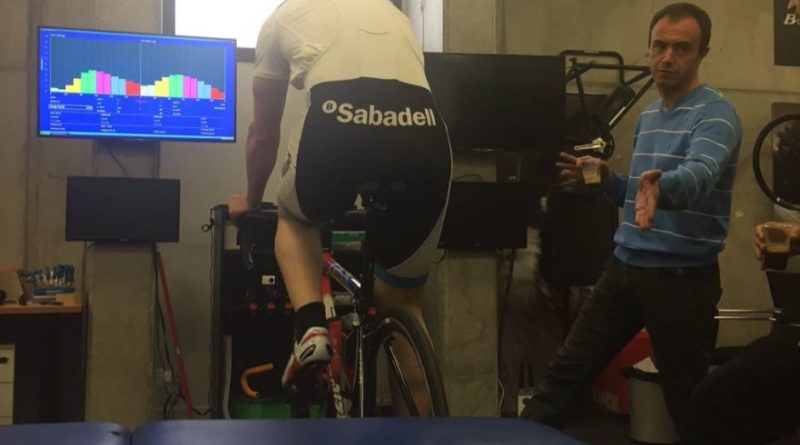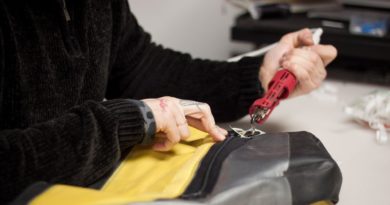Jon Iriberri: Challenging bikefitting’s central principle – should both the bike and the customer adapt?
Back in May, CyclingIndustry.News welcomed bikefitting guru Jon Iriberri to our team of specialist contributors (and we’ll be announcing more of those shortly). At the time, we quizzed Jon on everything from scientific theory to making a living from professional service. Now it’s over to Mr. Iriberri who has a few new ideas to bounce around (and it’s okay to disagree!)…
Numerous papers, scientific reports and books have been written outlining a proposed guide to ‘proper’ bike fitting. I don’t intend to replicate, imitate or reproduce any of these systems in this column. As I’m quite progressive, I would like to write about something sadly less exciting for the reader, but philosophically much more complex, which is the underlying concepts that influenced the creation of these ‘guides’. Many questions I cover will have no concrete answer. I will give opinions that will probably be accepted by some, and rejected by others – but that’s ok. These are simply my opinions based on over a decade of experience in a field that does not have a great deal of scientific scrutiny.
One benefit of this approach is that the Editor will be happy: he asked me to base my columns on scientific evidence, and then go from there. There are many bikefit commentators and resources online, so I’m hoping this column will offer something different, valuable, and personal to my experiences as a bikefitter. After the basic science foundation has been covered, I’ll largely be relying on years of watching how people uses their bicycles.
Comfort Over Performance
Most short-term marketing strategies for bikefitting try to catch the attention of the cyclist by repetition of a fundamental phrase (or prayer!): ‘less pain = more performance’. Which is great, and true to an extent. It’s a good start, because many people only consider having a bike fit if they’re in pain.
We’ll look at some of the other reasons people might come for a bikefit in future columns, but for now I will address the desire to avoid pain while cycling. It truly is a global phenomenon – confirmed by my own experiences and some great conversations with fitters from five continents.
Obviously people come to us for many different reasons, but it is a real surprise when people come to the lab and tell us they have no past or present pain (or even discomfort or unpleasant sensation) on their rides.
It seems to be a global cultural thing; the bikefitters version of ‘if it ain’t broke, don’t fix it’. But of course many people can absorb tremendous physiological stress from poor fit with no issues (the ‘macro-absorbers’ espoused by fitting legend and author on the topic Phil Burt), and some people simply don’t ride hard or long enough to allow issues to arise.
Theoretically, all bikefitting professionals and theories operate on a “come in before it’s too late” basis – prevention not cure. We’d hope the same for general medicine, but the fact is we only go to the doctor when we’re ill. It’s largely a part of western culture. The statistical reality is that people come to us to avoid pain on rides. We are not a non-profit organisation or charity that might offer free help. Maybe if we were it might change the type of reasons people have for waning a bikefit, but it is unlikely.
Whether you are a professional, an enthusiastic amateur, or just an occasional user of the bike for transport or leisure, nobody wants to go slow for no reason. Everybody appreciates faster speed, faster comfort, less stress/effort. Performance IS important for the cyclist, regardless of what type, as it just represents efficiency.
The problem that arises, that bikefitters try to fix, is when the desire to go faster outstrips the level of physiological (or psychological) comfort. Many of you may be familiar with Manolo Saiz’s response when it was pointed out his TT fits were uncomfortable: “this is for going faster, not for going comfortable”. Thankfully, our understanding of the performance-comfort axis has progressed since those days, but the essential premise remains unchanged: the cyclist in general wants to go faster, but under no discomfort or pain. That’s our job in a nutshell.
Bidirectional Adaptation
Often bike retailers try to explain to dissatisfied customers: “you need to adapt to it”. Curiously, though, in the bikefitting world the unwritten but universally accepted rule is that the bike must adapt to the customer and not vice versa. In one of my latest fitting meetings the hugely-respected Curtis Cramblett wisely pointed out that the cyclist does require both set-up and adaptation in order to make the most of an uncommon unnatural scenario such as riding a bicycle. Both bicycle and cyclist have limitations. Functionally, or mechanically, if we want to create a great unity it makes perfect
sense that both will probably require adaptations.
I remember some time ago I made a custom frame for a customer with a very painful back. The result was great as the pain went, but the frame’s reach was unnaturally short and the stack too high to be very balanced or safe. Whilst we removed their pain, that frame over the course of many kilometres is stopping the slow adaptation of that customer to a more ‘normal’ cycling position. The human body is a complex system, and the mind that drives it even more so. In this anecdotal example I wanted to demonstrate how over-adaptation for the existing cycling position can limit the cyclist’s ability to adopt a different (better) future position.
Something else worth mentioning: in conjunction with mechanical changes made during fitting to avoid the pain, good fitters often recommend exercises to do at home which reinforce the activation of a specific muscle group or motion. The problem is that as soon as pain reduces/disappears, so does the dedication to doing those exercises. The chicken/egg situation, though, is that maybe with these exercises properly performed in the first place, you could have avoided the mechanical adaptation adopted in the bike fit. The problem is that doing exercises requires effort from the customer, and often they would prefer to ‘buy’ a silver bullet bikefit solution.
Just to make what we’re all thinking by now explicit: the mechanical adaptation is a pretty poor compromise solution, acting quickly, but limited to medium-term effect. The alternative – human adaptation – is cheap, but needs care and a relative great deal of time. I recommend using a balance of the two (bikefit changes and rider changes), with experience guiding what is appropriate for each rider/subject. Read carefully their adaptation characteristics, and consider how receptive they are to your advice.
Process Versus Event
My friend Phil Cavell has spent 25 years in the industry, as a cyclist with a huge amount of personal curiosity. He has always strenuously argued that bikefitting should be a process, not an event. It is an iterative protocol over time and not a one-measure pat on the back and off you go. A lot of us in the bikefitting world would no doubt like to see repeated visits from our customers; to adjust, change, upgrade or who knows. But that doesn’t seem to happen often enough, sadly.
The reasons are difficult to explain. From a theoretical point of view, just a period of injury-free training after a bikefit will change your functionality (strength, flexibility, weight and physical condition to adaptation) – and this could be provide an upgrade enough of itself. Let’s not forget most customers only visit when something goes wrong.
 In several cases, a long time after initial fitting, customers may come back to you with a new bike that maybe is not the right or best one for them. Although they may leave your lab/studio happy with any changes or suggestion, they may revert to what they ‘want’, rather than what you feel they ‘need’. The same also applies to saddle, shoes or cleat changes. Maybe this is a common reflex (“it’s my body, surely I know best?”), and maybe there needs to be some research into human behaviour and the fitting process, but I repeat that this is a big hole of unknown tendencies in our job.
In several cases, a long time after initial fitting, customers may come back to you with a new bike that maybe is not the right or best one for them. Although they may leave your lab/studio happy with any changes or suggestion, they may revert to what they ‘want’, rather than what you feel they ‘need’. The same also applies to saddle, shoes or cleat changes. Maybe this is a common reflex (“it’s my body, surely I know best?”), and maybe there needs to be some research into human behaviour and the fitting process, but I repeat that this is a big hole of unknown tendencies in our job.
Theoretically, a customer who discover the benefits of a good fitting should return to you to discuss evolutions and future changes. Some of them do. Most do not. Bikefitting needs to work at being recognised as a process and not an event, like Cavell says. But how do we achieve this?
Fit Studio As Road Representative Scenario
I can confidently state that bikefitting a rider in a lab would not render the same results/measurements as if we were able to do it in the real environment on the road. Some of the things we do and recommend are based upon fixed conditions and parameters that are not exactly the same as in the real world. Numerous WorldTour teams are seeing this and now conducting bikefits (and aerodynamic testing) on the road or in a velodrome rather than solely in a lab or windtunnel.
We have developed our fitting processes and our possibilities of intervention to a very high level, but sometimes we have forgotten that a quiet lab environment is not where the bicycle is going to be ridden.
One clear example is the knee – ankle joint. There is a wide range of measures we can observe on the road, in ourselves, or in our customers. If you only have laboratory data it’s only a medium term snapshot and general representation of what you hope will be going on on the road… How much real accuracy is there in such extrapolated data?
I have learned a lot about this using technology that measures several parameters on the bike while riding or in the lab. Force analysis, Electromyography and Inertial movements units show that the vast majority of lab data is not replicated outdoors. Parameters such as fatigue, motor skills and intensities can change our perception of the lab fitting process. What happens in the lab is definitely related to real world riding, but does not give the full picture on reliable info needed when making some decisions about mechanical fit. Will my hip be as stable on the solid jig as it is on a free balance two-wheel vehicle going uphill? What about standing position over the pedals? How many bikefitters look at that in the lab?
To loosely summarise Basic Principles of Bike Fitting (1/2):
- Cyclists are no longer willing to tolerate pain.
- Both the cycle and the cyclist may need to adapt to each other.
- To be a permanent consultant professional you will need imagination.
- What happens in the lab, often must remain in the lab.
In Jon’s next piece he will discuss:
- The knowledge and technology balance.
- Dynamic Analysis: Kinetic and Kinematic .
- Science v Experience: Scepticism is good.
- Bike Fit Marketing.



